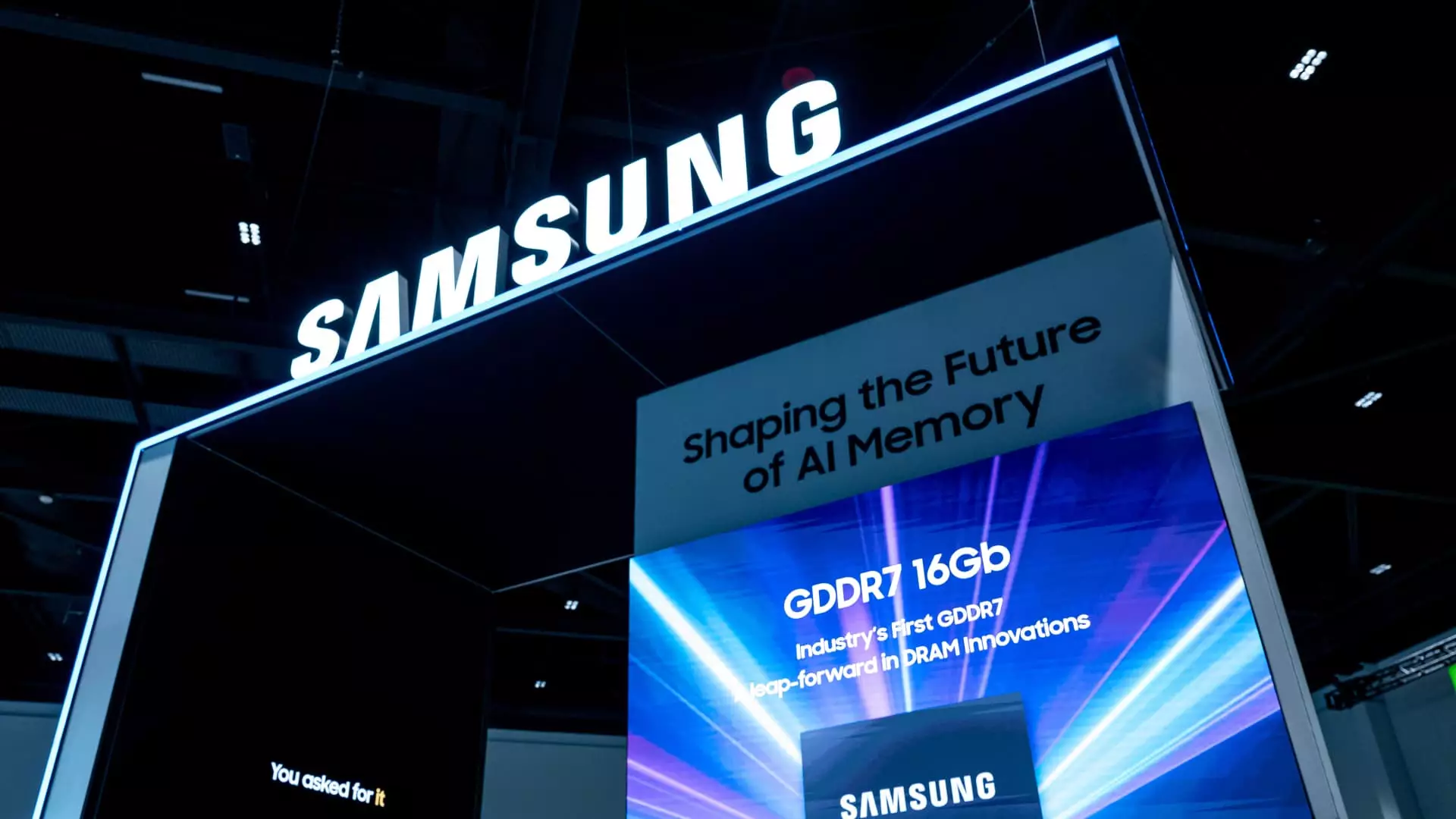Samsung Electronics, a titan in the global technology landscape, is facing a profound profit downturn that demands not just acknowledgment but strategic recalibration. The company’s recent forecast reveals a staggering 56% decline in operating profit for Q2—plummeting from 10.44 trillion won last year to an estimated 4.6 trillion won. This isn’t merely a temporary setback; it underscores the mounting challenges Samsung faces amid a rapidly shifting semiconductor environment and fluctuating demand in key markets. While short-term numbers paint a sobering picture, they also serve as a stark reminder that even in dominance, vulnerability lurks—a reality the company must confront with agility and foresight.
The Underlying Causes: A Complex Web of Market Dynamics
Several intertwined factors contribute to Samsung’s current predicament. Chief among these are inventory adjustments and geopolitical tensions, specifically U.S. restrictions on advanced AI chips for China. These restrictions have created a bottleneck in the company’s supply chain, diminishing its ability to capitalize on burgeoning AI markets. Furthermore, Samsung’s struggle to gain ground in the high-bandwidth memory (HBM) segment—critical for AI applications—reflects a broader loss of competitive edge. While Samsung lags behind SK Hynix and Micron in this frontier, the implications are significant; being second or third does not suffice in an industry where innovation and timeliness drive profitability.
The delay in certifying the latest HBM chips with Nvidia further complicates Samsung’s prospects. Given Nvidia’s dominance, with approximately 70% of HBM demand, any delay in product approval curtails Samsung’s potential revenue streams. It highlights how tightly intertwined the semiconductor supply chain has become, where a single bottleneck can ripple across the entire ecosystem, stunting growth and eroding market share.
Leadership and Competitive Strategies in Turmoil
Samsung’s struggles extend beyond supply chain issues; they reveal a critical misalignment in strategic positioning. While competitors like SK Hynix swiftly leapfrogged ahead in HBM technology and secured key deals, Samsung appears to be in a reactive stance, pushing back timelines and navigating accreditation hurdles. This reactive posture could be detrimental if not addressed swiftly, especially considering Nvidia’s market influence.
Meanwhile, the company’s foundry business faces its own hurdles, with weak order volumes intensifying the pressure from TSMC, which continues to dominate the contract manufacturing landscape. Efforts to revamp this segment must be accelerated, or Samsung risks losing further ground in a highly competitive domain that is crucial for future growth. The reported headcount cuts across divisions signal an internal acknowledgment of these difficulties, but such moves also risk stifling innovation and flexibility at a pivotal juncture.
The Road Ahead: Innovation and Strategic Reassessment
The road to recovery for Samsung hinges on its ability to reassert itself as an innovator rather than a laggard. Addressing the delays in high-margin HBM products and securing timely certification with key partners like Nvidia are crucial. This will require not only technological breakthroughs but also robust strategic negotiations and perhaps a recalibration of R&D priorities to focus on faster deployment of next-generation chips.
Furthermore, Samsung must critically evaluate its geopolitical risk management and diversify its supply chain dependencies. The current U.S. restrictions have exposed vulnerabilities; mastering the balance between global expansion and localized production will be vital in safeguarding against future shocks. The company’s ability to innovate aggressively in memory technology, find new markets, and streamline production processes will determine whether it can regain momentum or fall further behind.
While the immediate outlook appears bleak, Samsung’s substantial market share, extensive R&D capabilities, and resilient brand position provide a strong foundation. The challenge lies in transforming these strengths into opportunities. To do so, the company must embrace radical innovation, strategic agility, and perhaps a reevaluation of its core business models—lest it risk becoming a secondary player in an increasingly competitive semiconductor arena.

